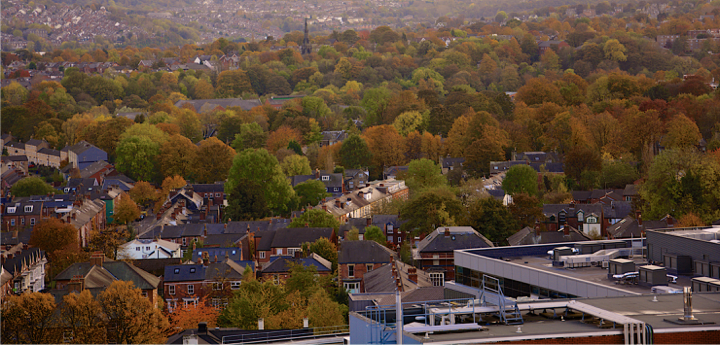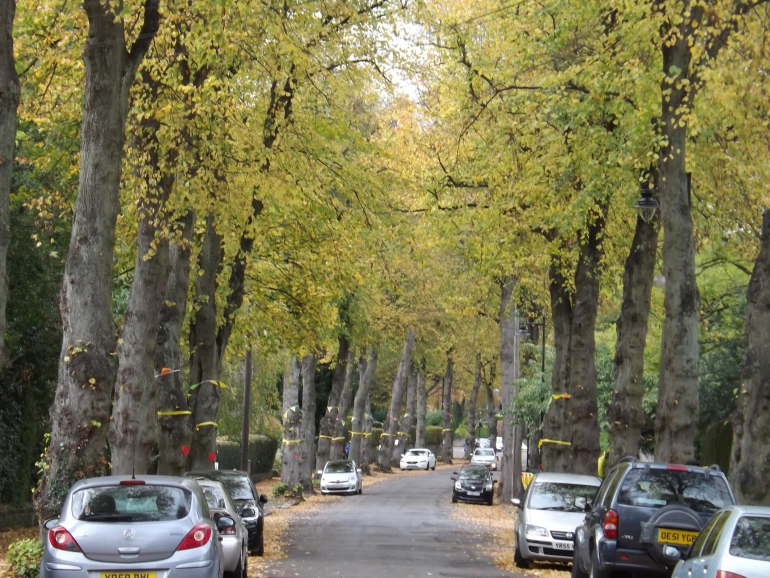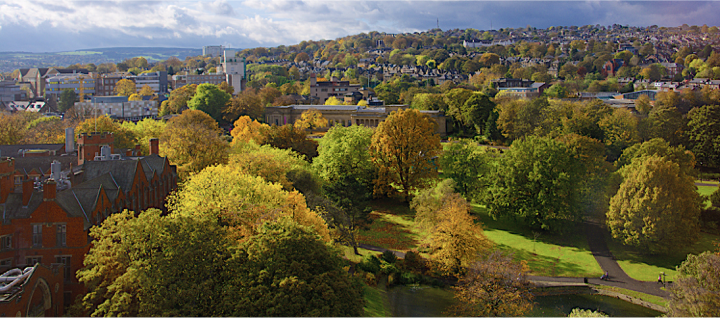Statement on Sheffield’s trees from staff at the Department of Landscape
In November of 2016, Sheffield City Council undertook a consultation process for its draft Trees and Woodlands Strategy 2016-2030. Staff in the Department of Landscape made responses to specific points within the strategy, and to the strategy overall. These were all collated into a single, collective Department of Landscape entry into the consultation. In this blog entry, which is submitted and endorsed by the signatories below (comprising all the academic and teaching staff in the Department of Landscape), we are publishing the accompanying statement to that submission.
We welcome Sheffield City Council’s consultation process for the Trees and Woodlands Strategy 2016-2030. The planning and management of the urban forest is an extremely important topic, with hugely significant implications for human health and well-being, biodiversity and climate change.
As a Department comprised of researchers and educators and practitioners in landscape ecology, landscape architecture, landscape planning and landscape management, we would like to contribute in a constructive way to the holistic and progressive development of a comprehensive urban tree management strategy, especially in the light of the on-going felling of urban street trees under the Streets Ahead Five Year Tree Management Strategy.
We strongly believe in the concept of an urban forest and we fully support initiatives such as The Outdoor City that fundamentally depend on Sheffield’s richly treed urban environment. The extent of Sheffield’s urban forest is impressive. In many ways, it is the premier example of an urban forest in the UK. This is the result of forward-looking city plans from the early 20th Century that anticipate the modern concept of ‘Green Infrastructure’, and from intensive street tree planting from the middle of the 19th Century to the middle of the 20th Century. This has resulted in an unrivalled legacy to current and future generations. The maintenance of this resource, and its on-going value, depends on comprehensive design, planning and management strategies.

The Sheffield Trees and Woodlands Strategy 2016-2030 offers a unique opportunity to demonstrate innovation in how the city measures and values the benefits of its trees, that go well beyond short-term economic considerations. Opportunities for sustainable, integrative, urban tree management that actively address the contribution that trees make to the cultural and ecological environment of the city must be seized. On-going research in the Department supports the valuable contribution that trees and woodland can make to human health and well-being, cooling the city, attenuating flood waters and providing habitats for a wide range of flora and fauna. Student design and planning projects throughout all student cohorts in the Department serve as testing grounds for innovative uses for trees across a wide range of real sites in the city. And PhD and Masters theses explore the extent and breadth of ecosystem benefits that trees bring to the city, and to the tangible and intangible cultural benefits. This research shows that Sheffield residents value street trees highly.
More tellingly, the felling of street trees as part of the on-going Streets Ahead Tree Management Plan has provoked strong and passionate responses from the public. The current management approach to the removal of street trees has resulted in public animosity and potentially high legal and administrative costs brought about by these legal challenges, Freedom of Information costs, and the decision to employ security at the Rustlings Road site.

We believe that a stronger urban tree strategy for Sheffield can be developed organically with the good will of Sheffield residents when it is accompanied by a well-rounded and open assessment of the benefits and disadvantages of urban trees and supported by the latest research in urban forestry and landscape architecture.
We can actively contribute to the development of Sheffield’s urban forest through research and teaching projects, conferences, innovative case studies, the development of tree-planting prototypes and management and maintenance specifications particularly suited to Sheffield. We hope that our collective contribution will help create a well-informed and more transparent decision-making process for Sheffield City Council, with specific reference to the draft Trees and Woodlands Strategy 2016-2030 and the Streets Ahead Tree Five Year Management Strategy.
We look forward to hearing from the Council in response to our comments and are happy to elaborate on further points.
Mel Burton, Ross Cameron, Andy Clayden, Catherine Dee, Nicola Dempsey, Nigel Dunnett, Kamni Gill, James Hitchmough, Anna Jorgensen, Eckart Lange, Sally O’Halloran, Laurence Pattacini, Clare Rishbeth, Olaf Schroth, Kevin Thwaites, Thom White, Helen Woolley, Jan Woudstra

This is an excellent contribution to what has been in parts an emotive and partially-informed debate. ALL parts of Sheffield need to benefit from such a thorough discussion of benefit and disadvantage in the treescape of the City without becoming entrenched with local loyalties.
LikeLike
Thanks for your insight for your fantastic posting. I’m glad I have taken the time to see this.
LikeLike
Tree felling is now totally random and conducted on a hit and run basis. Trees are being removed wherever they can regardless of condition etc. Please follow #saveshefftrees
LikeLike
Thank you department of landscape. This is a wonderful offer to SCC. Hope you get a positive reply soon.
LikeLike
Wonderful article by the department of the landscape. tree Care is more important in now days.
LikeLike